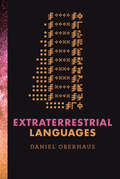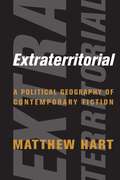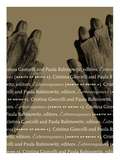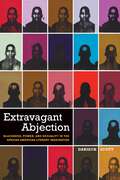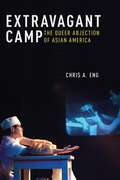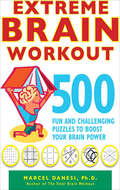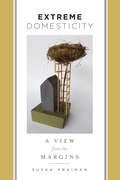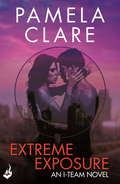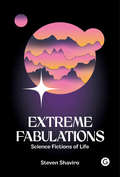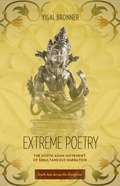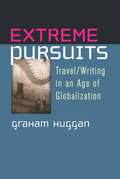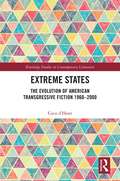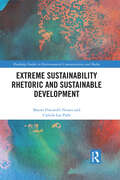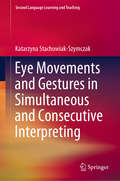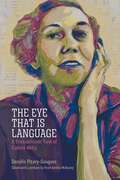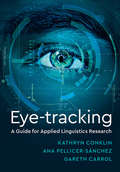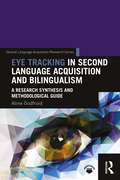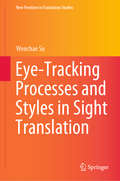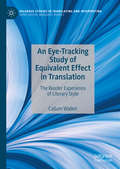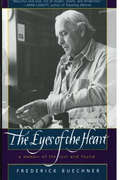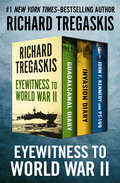- Table View
- List View
Extraterrestrial Languages (The\mit Press Ser.)
by Daniel OberhausIf we send a message into space, will extraterrestrial beings receive it? Will they understand?The endlessly fascinating question of whether we are alone in the universe has always been accompanied by another, more complicated one: if there is extraterrestrial life, how would we communicate with it? In this book, Daniel Oberhaus leads readers on a quest for extraterrestrial communication. Exploring Earthlings' various attempts to reach out to non-Earthlings over the centuries, he poses some not entirely answerable questions: If we send a message into space, will extraterrestrial beings receive it? Will they understand? What languages will they (and we) speak? Is there not only a universal grammar (as Noam Chomsky has posited), but also a grammar of the universe? Oberhaus describes, among other things, a late-nineteenth-century idea to communicate with Martians via Morse code and mirrors; the emergence in the twentieth century of SETI (the search for extraterrestrial intelligence), CETI (communication with extraterrestrial intelligence), and finally METI (messaging extraterrestrial intelligence); the one-way space voyage of Ella, an artificial intelligence agent that can play cards, tell fortunes, and recite poetry; and the launching of a theremin concert for aliens. He considers media used in attempts at extraterrestrial communication, from microwave systems to plaques on spacecrafts to formal logic, and discusses attempts to formulate a language for our message, including the Astraglossa and two generations of Lincos (lingua cosmica).The chosen medium for interstellar communication reveals much about the technological sophistication of the civilization that sends it, Oberhaus observes, but even more interesting is the information embedded in the message itself. In Extraterrestrial Languages, he considers how philosophy, linguistics, mathematics, science, and art have informed the design or limited the effectiveness of our interstellar messaging.
Extraterritorial: A Political Geography of Contemporary Fiction
by Matthew HartThe future of fiction is neither global nor national. Instead, Matthew Hart argues, it is trending extraterritorial. Extraterritorial spaces fall outside of national borders but enhance state power. They cut across geography and history but do not point the way to a borderless new world. They range from the United Nations headquarters and international waters to CIA black sites and the departure zones at international airports. The political geography of the present, Hart shows, has come to resemble a patchwork of such spaces.Hart reveals extraterritoriality’s centrality to twenty-first-century art and fiction. He shows how extraterritorial fictions expose the way states construct “global” space in their own interests. Extraterritorial novels teach us not to mistake cracks or gradations in political geography for a crisis of the state. Hart demonstrates how the unstable character of many twenty-first-century aesthetic forms can be traced to the increasingly extraterritorial nature of contemporary political geography. Discussing writers such as Margaret Atwood, J. G. Ballard, Amitav Ghosh, Chang-rae Lee, Hilary Mantel, and China Miéville, as well as artists like Hito Steyerl and Mark Wallinger, Hart combines lively critical readings of contemporary novels with historical and theoretical discussions about sovereignty, globalization, cosmopolitanism, and postcolonialism. Extraterritorial presents a new theory of literature that explains what happens when dreams of an open, connected world confront the reality of mobile, elastic, and tenacious borders.
Extravagances: Habits of Being 4
by Cristina GiorcelliThis final volume in the four-volume series Habits of Being shows how the dialectic between everyday appearance and outrageous acts is mediated through clothing and accessories. It considers how clothing and accessories can move quickly from the ordinary to the extravagant. Employing many different approaches, these essays explore how wearing an object—a crown, a flower, an earring, a corsage, a veil, even a length of material—can stray beyond the bounds of the body on which it is placed into the discrepant territory of flagrantly excessive public signs of love, status, honor, prestige, power, desire, and display. The varied contributions of scholars (historians, ethnographers, literary and film critics) and artists (photographers, sculptors, writers, weavers, and embroiderers) take up the threads of these forays into history, psyche, and aesthetics in surprising and useful ways. With examples from around the world, contributors address how the simple action of ornamenting the body, even with something as common as a button, are open to elaborate interpretations—which themselves offer new understandings of human behavior and artistic endeavor. When our &“habits of being&” receive close scrutiny, they seem anything but habitual. Contributors: Mariapia Bobbiobi; Camilla Cattarulla, U of Rome Three; Paola Colaiacomo, Sapienza, U of Rome; Maria Damon, Pratt Institute of Art; Joanne B. Eicher, U of Minnesota; Maria Giulia Fabi, U of Ferrara; Margherita di Fazio; Adeena Karasick, Fordham U; Tarrah Krajnak, Pitzer College; Charlotte Nekola, William Paterson U; Victoria R. Pass, Maryland Institute College of Art; Amanda Salvioni, U of Macerata; Maria Anita Stefanelli, U of Rome Three.
Extravagant Abjection: Blackness, Power, and Sexuality in the African American Literary Imagination (Sexual Cultures #17)
by Darieck ScottPart of the American Literatures Initiative Series 2011 Winner of the Alan Bray Memorial Book Award presented by the Modern Language AssociationChallenging the conception of empowerment associated with the Black Power Movement and its political and intellectual legacies in the present, Darieck Scott contends that power can be found not only in martial resistance, but, surprisingly, where the black body has been inflicted with harm or humiliation.Theorizing the relation between blackness and abjection by foregrounding often neglected depictions of the sexual exploitation and humiliation of men in works by James Weldon Johnson, Toni Morrison, Amiri Baraka, and Samuel R. Delany, Extravagant Abjection asks: If we’re racialized through domination and abjection, what is the political, personal, and psychological potential in racialization-through-abjection? Using the figure of male rape as a lens through which to examine this question, Scott argues that blackness in relation to abjection endows its inheritors with a form of counter-intuitive power—indeed, what can be thought of as a revised notion of black power. This power is found at the point at which ego, identity, body, race, and nation seem to reveal themselves as utterly penetrated and compromised, without defensible boundary. Yet in Extravagant Abjection, “power” assumes an unexpected and paradoxical form. In arguing that blackness endows its inheritors with a surprising form of counter–intuitive power—as a resource for the political present—found at the very point of violation, Extravagant Abjection enriches our understanding of the construction of black male identity.
Extravagant Camp: The Queer Abjection of Asian America (Sexual Cultures)
by Chris A. EngWinner of the 2023-2024 CLAGS Fellowship AwardIlluminates an irreverent queer cultural strategy for grappling with and remaking abject histories of violenceExtravagant Camp takes as its point of critical departure the multiple valences of the word “camp”: the camp, as a geopolitical space and process of concentrating racialized populations, and the campy as a mode of queer expressiveness. Engaging its double meaning, Chris A. Eng explores how camp and encampment have contoured the figure of the Asian American.The book follows campy performances that imaginatively restage the camps that have been central to dominant narratives of Asian American history: Chinese railroad labor, Japanese American incarceration, Vietnam War refugee resettlement, and counterinsurgency camps across US imperial entanglements in the Philippines. Illuminating an eclectic ensemble of performances that grapple with Asian American history—from classical works in the Asian American literary tradition to emerging works of theater and film—Extravagant Camp uncovers Asian American camp as a prevalent yet underappreciated cultural strategy for contesting accounts of Asian American racialization that overly rely on terms of abjection.Theorizing Asian American camp as both a performance strategy and reading practice, Eng examines how artists drag up the maligned racial roles of the coolie, the internee, the refugee, and the diva to make different sense of these histories. Extravagant Camp shows how Asian American camp takes on queerness as a resource to enliven modes of joy, beauty, and pleasure within structures of constraint, revealing the types of power camp retrieves for racialized communities in the face of abjection. Geared toward the extravagant, Asian American camp demands a recognition of queer abjection not as the basis for our undoing, but rather the grounds for a more radical social remaking.
Extreme Brain Workout: 500 Fun and Challenging Puzzles to Boost Your Brain Power
by Marcel DanesiHave fun and power up your mind with these puzzles designed to boost your verbal and logic skills, plus test your IQ.Extreme Brain Workout is a series of puzzles designed to engage the core parts of your brain that are responsible for verbal ability, logical thinking and even your IQ. Each group of puzzles progresses from simple to complex so that they are accessible and challenging for everyone, from the very beginner to the dedicated puzzle master. With each set of puzzles, you’ll also find information about the specific part of your brain being worked out so that you can choose what areas to focus on.
Extreme Domesticity
by Susan FraimanDomesticity gets a bad rap. We associate it with stasis, bourgeois accumulation, banality, and conservative family values. Yet in Extreme Domesticity, Susan Fraiman reminds us that keeping house is just as likely to involve dislocation, economic insecurity, creative improvisation, and queered notions of family. Her book links terms often seen as antithetical: domestic knowledge coinciding with female masculinity, feminism, and divorce; domestic routines elaborated in the context of Victorian poverty, twentieth-century immigration, and new millennial homelessness. Far from being exclusively middle-class, domestic concerns are shown to be all the more urgent and ongoing when shelter is precarious. Fraiman's reformulation frees domesticity from associations with conformity and sentimentality. Ranging across periods and genres, and diversifying the archive of domestic depictions, Fraiman's readings include novels by Elizabeth Gaskell, Sandra Cisneros, Jamaica Kincaid, Leslie Feinberg, and Lois-Ann Yamanaka; Edith Wharton's classic decorating guide; popular women's magazines; and ethnographic studies of homeless subcultures. Recognizing the labor and know-how needed to produce the space we call "home," Extreme Domesticity vindicates domestic practices and appreciates their centrality to everyday life. At the same time, it remains well aware of domesticity's dark side. Neither a romance of artisanal housewifery nor an apology for conservative notions of home, Extreme Domesticity stresses the heterogeneity of households and probes the multiplicity of domestic meanings.
Extreme Domesticity: A View from the Margins (Gender and Culture Series)
by Susan FraimanDomesticity gets a bad rap. We associate it with stasis, bourgeois accumulation, banality, and conservative family values. Yet in Extreme Domesticity, Susan Fraiman reminds us that keeping house is just as likely to involve dislocation, economic insecurity, creative improvisation, and queered notions of family. Her book links terms often seen as antithetical: domestic knowledge coinciding with female masculinity, feminism, and divorce; domestic routines elaborated in the context of Victorian poverty, twentieth-century immigration, and new millennial homelessness. Far from being exclusively middle-class, domestic concerns are shown to be all the more urgent and ongoing when shelter is precarious.Fraiman's reformulation frees domesticity from associations with conformity and sentimentality. Ranging across periods and genres, and diversifying the archive of domestic depictions, Fraiman's readings include novels by Elizabeth Gaskell, Sandra Cisneros, Jamaica Kincaid, Leslie Feinberg, and Lois-Ann Yamanaka; Edith Wharton's classic decorating guide; popular women's magazines; and ethnographic studies of homeless subcultures. Recognizing the labor and know-how needed to produce the space we call "home," Extreme Domesticity vindicates domestic practices and appreciates their centrality to everyday life. At the same time, it remains well aware of domesticity's dark side. Neither a romance of artisanal housewifery nor an apology for conservative notions of home, Extreme Domesticity stresses the heterogeneity of households and probes the multiplicity of domestic meanings.
Extreme Exposure: I-Team 1 (I-Team #1)
by Pamela ClareFans of Suzanne Brockmann, Maya Banks, Christy Reece, Julie Ann Walker and Cindy Gerard will adore Pamela Clare's expertly plotted romantic suspense series, which sets the pages alight with sizzling chemistry. For tension, thrills, romance and passion take a spin with the I-Team.In the years since her child's father left her, Kara McMillan has kept men at bay. The hard-boiled journalist has vowed never to become vulnerable again, however lonely she feels. With his dangerous good looks, charm and power, Senator Reece Sheridan could have just about any woman he sets his piercing eyes on. But he's intrigued by only one: gutsy, sensual reporter Kara, who promises to be every bit the firebrand in bed that she is in print. But this is no fling. A sudden political scandal - and attempts on Kara's life - threaten to drive them apart. Yet maybe adversity will draw them into a bond even more intense than their steamy embraces...Sexy. Thrilling. Unputdownable. Take a wildly romantic ride with Pamela Clare's I-Team: Extreme Exposure, Hard Evidence, Unlawful Contact, Naked Edge, Breaking Point, Striking Distance, Seduction Game.
Extreme Fabulations: Science Fictions of Life
by Steven ShaviroAn examination of science fiction narratives and the light they shed on human life, the unknowable future, and the vagaries of unforeseeable change.With this book, Steven Shaviro offers a thought experiment. He discusses a number of science fiction narratives: three novels, one novella, three short stories, and one musical concept album. Shaviro not only analyzes these works in detail but also uses them to ask questions about human, and more generally, biological life: about its stubborn insistence and yet fragility; about the possibilities and perils of seeking to control it; about the aesthetic and social dimensions of human existence, in relation to the nonhuman; and about the ethical value of human life under conditions of extreme oppression and devastation. Shaviro pursues these questions through the medium of science fiction because this form of storytelling offers us a unique way of grappling with issues that deeply and unavoidably concern us but that are intractable to rational argumentation or to empirical verification. The future is unavoidably vague and multifarious; it stubbornly resists our efforts to know it in advance, let alone to guide it or circumscribe it. But science fiction takes up this very vagueness and indeterminacy and renders it into the form of a self-consciously fictional narrative. It gives us characters who experience, and respond to, the vagaries of unforeseeable change.
Extreme Poetry: The South Asian Movement of Simultaneous Narration (South Asia Across the Disciplines)
by Michael BronnerBeginning in the sixth century C.E. and continuing for more than a thousand years, an extraordinary poetic practice was the trademark of a major literary movement in South Asia. Authors invented a special language to depict both the apparent and hidden sides of disguised or dual characters, and then used it to narrate India's major epics, the Ramayana and the Mahabharata, simultaneously.Originally produced in Sanskrit, these dual narratives eventually worked their way into regional languages, especially Telugu and Tamil, and other artistic media, such as sculpture. Scholars have long dismissed simultaneous narration as a mere curiosity, if not a sign of cultural decline in medieval India. Yet Yigal Bronner's Extreme Poetry effectively negates this position, proving that, far from being a meaningless pastime, this intricate, "bitextual" technique both transcended and reinvented Sanskrit literary expression.The poems of simultaneous narration teased and estranged existing convention and showcased the interrelations between the tradition's foundational texts. By focusing on these achievements and their reverberations through time, Bronner rewrites the history of Sanskrit literature and its aesthetic goals. He also expands on contemporary theories of intertextuality, which have been largely confined to Western texts and practices.
Extreme Pursuits
by Graham HugganRecent figures suggest that there will be 1. 6 billion arrivals at world airports by the year 2020. Extreme Pursuitslooks at the new conditions of global travel and the unease, even paranoia, that underlies them---at the opportunities they offer for alternative identities and their oscillation between remembered and anticipated states. Graham Huggan offers a provocative account of what is happening to travel at a time characterized by extremes of social and political instability in which adrenaline-filled travelers appear correspondingly determined to take risks. It includes discussions of the links between tourism and terrorism, of contemporary modes of disaster tourism, and of the writing that derives from these; but it also confirms the existence of more responsible forms of travel/writing that demonstrate awareness of a chronically endangered world. Extreme Pursuitsis the first study of its kind to link travel writing explicitly with structural changes in the global tourist industry. The book makes clear that travel writing can no longer take refuge in the classic distinctions (traveler versus tourist, foreigner versus native) on which it previously depended. Such distinctions---which were dubious in the first place---no longer make sense in an increasingly globalized world. Huggan argues accordingly that the category "travel writing" must include experimental ethnography and prose fiction; that it should concern itself with other kinds of travel practices, such as those related to Holocaust deportation and migrant labor; and that it should encompass representations of travelers and "traveling cultures" that appear in popular media, especially TV and film. Graham Huggan is Professor of Commonwealth and Postcolonial Literatures at the University of Leeds. He is the coauthor, with Patrick Holland, ofTourists with Typewriters: Critical Reflections on Contemporary Travel Writing(University of Michigan Press) and coauthor, with Helen Tiffin, ofPostcolonial Ecocriticism(Routledge). Illustration: "Shadow Wall," 2006 © Shaun Tan.
Extreme States: The Evolution of American Transgressive Fiction 1960-2000 (Routledge Studies in Contemporary Literature)
by Coco d'HontTransgressive fiction explores the crossing of boundaries. Because of its extreme content and style, it is often considered controversial. However, transgressive fiction is not just shocking or disruptive. It is a continuation of an American tradition of creating culture through the crossing of moral, geographical and social boundaries. Extreme States traces the evolution of American transgressive fiction from the 1960s to 2000, exploring how transgressive fiction reflects, exaggerates and critically interrogates how central American ideologies are perpetually (re)constructed in its extra-textual context.
Extreme Sustainability Rhetoric and Sustainable Development (Routledge Studies in Environmental Communication and Media)
by Mauro Fracarolli Nunes Camila Lee ParkThis book considers the nature, causes, and consequences of extreme pro- and anti-sustainability rhetoric, exploring how and why the expressions of radical views on sustainability-related themes may prevent real sustainable development. Following a thorough introduction on sustainability rhetoric, on dialogue, and on the role played by ideologies in the building of environmental beliefs, Fracarolli Nunes and Lee Park examine positions and statements expressed or made by individuals, companies, governments, and NGOs in the last decades. The outcomes of these considerations lead to the classification of expressions in different categories of sustainability rhetoric, laying the groundwork for the development of a ‘sustainability spectrum’: a metric for the level of radicalization of sustainability positions, which ranges from apocalyptic views to ultimate denial. Through the combination of historical perspectives, theoretical frameworks, and conceptual developments, this book provides a foundation for a more informed and productive dialogue between radically opposing views on sustainability issues. This volume will be of great interest to students, scholars, and practitioners researching and working in the areas of environmental communication and media, environmental politics, and sustainable development.
Eye Movements and Gestures in Simultaneous and Consecutive Interpreting (Second Language Learning and Teaching)
by Katarzyna Stachowiak-SzymczakThis book addresses eye movements and gestures as markers of language comprehension and production in interpreting as the "visible embodiment" of cognitive processing in simultaneous and consecutive interpreting. It discusses conference interpreting as a complex, multimodal activity where language processing is not restricted to auditory perception and oral production, highlighting the complexity of interpreting and exploring possible strategies that can be used by professional interpreters and students to make their work easier and more accurate.
The Eye of the Story
by Eudora WeltyThe Eye of the Story is a priceless collection of essays. A lot of informative aspects of writing with reference to great writers like Jane Austen, Virginia Woolf and many others have been included in this book.
The Eye That Is Language: A Transatlantic View of Eudora Welty (Critical Perspectives on Eudora Welty)
by Danièle Pitavy-SouquesDanièle Pitavy-Souques (1937–2019) was a European powerhouse of Welty studies. In this collection of essays, Pitavy-Souques pours new light on Welty’s view of the world and her international literary import, challenging previous readings of Welty’s fiction, memoir, and photographs in illuminating ways. The nine essays collected here offer scholars, critics, and avid readers a new understanding and enjoyment of Welty’s work. The volume explores beloved stories in Welty’s masterpiece The Golden Apples, as well as “A Curtain of Green,” “Flowers for Marjorie,” “Old Mr. Marblehall,” “A Still Moment,” “Livvie,” “Circe,” “Kin,” and The Optimist’s Daughter, One Writer’s Beginnings, and One Time, One Place. Essays include “Technique as Myth: The Structure of The Golden Apples” (1979), “A Blazing Butterfly: The Modernity of Eudora Welty” (1987), and others written between 2000 and 2018. Together, they reveal and explain Welty’s brilliance for employing the particular to discover the universal. Pitavy-Souques, who briefly lived in and often revisited the South, met with Welty several times in her Jackson, Mississippi, home. Her readings draw on the visual arts, European theorists, and styles of modernism, postmodernism, surrealism, as well as the baroque and the gothic. The included essays reflect Pitavy-Souques’s European education, her sophisticated understanding of intellectual theories and artistic movements abroad, and her passion for the literary achievement of women of genius. The Eye That Is Language: A Transatlantic View of Eudora Welty reveals the way in which Welty’s narrative techniques broaden her work beyond southern myths and mysteries into a global perspective of humanity.
Eye-Tracking: A Guide for Applied Linguistics Research
by Kathy Conklin Gareth Carrol Ana Pellicer-SánchezEye-tracking is quickly becoming a valuable tool in applied linguistics research as it provides a real-time, direct measure of cognitive processing effort. This book provides a straightforward introduction to the technology and how it might be used in language research. With a strong focus on the practicalities of designing eye-tracking studies that achieve the standard of other well-established experimental techniques, it provides valuable information about building and designing studies, touching on common challenges and problems, as well as solutions. Importantly, the book looks at the use of eye-tracking in a wide variety of applied contexts including reading, listening and multimodal input, writing, testing, corpus linguistics, translation, stylistics and computer-mediated communication. Each chapter finishes with a simple checklist to help researchers use eye-tracking in a wide variety of language studies. Discussion is grounded in concrete examples, which will allow users coming to the technology for the first time to gain the knowledge and confidence to use it to produce high-quality research.
Eye Tracking in Second Language Acquisition and Bilingualism: A Research Synthesis and Methodological Guide (Second Language Acquisition Research Series)
by Aline GodfroidEye Tracking in Second Language Acquisition and Bilingualism provides foundational knowledge and hands-on advice for designing, conducting, and analysing eye-tracking research in applied linguistics. Godfroid’s research synthesis and methodological guide introduces the reader to fundamental facts about eye movements, eye-tracking paradigms for language scientists, data analysis, and the practicalities of building a lab. This indispensable book will appeal to undergraduate students learning principles of experimental design, graduate students developing their theoretical and statistical repertoires, experienced scholars looking to expand their own research, and eye-tracking professionals.
Eye-Tracking Processes and Styles in Sight Translation (New Frontiers in Translation Studies)
by Wenchao SuThis book presents new research on sight translation using cutting-edge eye-tracking technology. It covers various aspects of sight translation processes of both novice and professional interpreters, such as their textual processing behaviors, problem-solving patterns and reading-speech coordination. By focusing on the features of their gaze behaviors, the book describes the interpreters' processing behaviors and categorizes them into different processing styles. As one of the first books on sight translation employing an eye-tracking technique as the research method, it offers a valuable reference guide for future eye-tracking-based translation and interpreting research.
An Eye-Tracking Study of Equivalent Effect in Translation: The Reader Experience of Literary Style (Palgrave Studies in Translating and Interpreting)
by Callum WalkerThis book provides a detailed example of an eye-tracking method for comparing the reading experience of a literary source text readers with readers of a translation at stylistically marked points. Drawing on principles, methods and inspiration from fields including translation studies, cognitive psychology, and language and literary studies, the author proposes an empirical method to investigate the notion of stylistic foregrounding, with 'style' understood as the distinctive manner of expression in a particular text. The book employs Raymond Queneau’s Zazie dans le métro (1959) and its English translation Zazie in the Metro (1960) as a case study to demonstrate the proposed methods. This book will be of particular interest to students and scholars of translation studies, as well as those interested in literary reception, stylistics and related fields.
The Eyes of the Heart: A Memoir of the Lost and Found
by Frederick BuechnerFrom critically acclaimed author and Pulitzer Prize runner-up Frederick Buechner comes another powerfully honest memoir, The Eyes of the Heart. Full of poinant insights into his most personal relationships, this moving account traces how the author was shaped as much by his family's secrets as by its celebrations.Within the innermost chambers of his consciousness, Buechner, in his characteristically self-searching style, explores the mysteries and truths behind his deepest connections to family, friends, and mentors. Extraordinarily moving, this memoir follows not chronology but the converging paths of Buechner's imagination and memory.Buechner invites us into his library-his own Magic Kingdom, Surrounded by his beloved books and treasures, we discover how they serve as the gateway to Buechner's mind and heart. He draws the reader into his recollections, moving seamlessly from reminiscence to contemplation. Buechner recounts events such as the tragic suicide of his father and its continual fallout on his life, intimate and little-known details about his deep friendship with the late poet James Merrill, and his ongoing struggle to understand the complexities of his relationship to his mother.This cast of characters comprised of Buechner's relatives and loved ones is brought to vibrant life by his peerless writing and capacity to probe the depths of his own consciousness. Buechner visits his past with an honest eye and a heart open to the most painful and life-altering of realizations. heartbreaking and enlightening, The Eyes of the Heart is a treasure for any who have ever pondered the meaning and mystery of their own past.As "one of our finest writers," according to author Annie Dillard, Frederick Buechner provides yet another chapter in the tale of his life in this gripping memoir tracing the complicated roots and path of his inner life and family, with their multitude of intersections." The Eyes of the Heart stands as a touching testimonial to the significance of kinship to the author as well as to the legions of readers who have come to regard him as one of their own.
Eyewitness to World War II: Guadalcanal Diary, Invasion Diary, and John F. Kennedy and PT-109
by Richard TregaskisThree classic accounts of WWII from a reporter who &“shaped America&’s understanding of the war, and influenced every account that came after&” (Mark Bowden). Volunteer combat correspondent Richard Tregaskis risked life and limb to give American readers a soldier&’s–eye view of the Second World War. These three tales of bravery and sacrifice shed light on the Greatest Generation&’s darkest hours. Guadalcanal Diary: In August 1942, Tregaskis landed with the US Marines on Tulagi and Guadalcanal Islands in the South Pacific for the first major Allied offensive against Japanese forces. He details the first two months of the campaign and describes the courage and camaraderie of young marines who prepared for battle knowing that one in four of them wouldn&’t make it home. An instant #1 New York Times bestseller and the basis for a popular film of the same name, Guadalcanal Diary is a masterpiece of war journalism that &“captures the spirit of men in battle&” (John Toland). Invasion Diary: In July 1943, Tregaskis joined the Allied forces in Sicily and Italy and documented some of the fiercest fighting of the war, from bombing runs over Rome to the defense of the Salerno beachhead against heavy artillery fire to the fall of Naples. In compelling and evocative prose, Tregaskis depicts the terror and excitement of life on the front lines and his own harrowing brush with death when a chunk of German shrapnel pierced his helmet and shattered his skull. Invasion Diary is &“required reading for all who want to know how armies fight&” (Library Journal). John F. Kennedy and PT-109: In the early morning hours of August 2, 1943, the Japanese destroyer Amagiri sliced into US Navy motor torpedo boat PT-109 near the Solomon Islands. Ten surviving crewmembers and their young skipper, Lt. John F. Kennedy, clung to the wreckage. Over the next three days, the privileged son of a Boston multimillionaire displayed extraordinary courage and leadership as he risked his life to shepherd his crew to safety and coordinate a daring rescue mission deep in enemy territory. Lieutenant Kennedy earned a Navy and Marine Corps Medal and a Purple Heart, and the story of PT-109 captured the public&’s imagination and helped propel Kennedy all the way to the White House. Acclaimed war correspondent Tregaskis—who once beat out the future president for a spot on the Harvard University swim team—brings this remarkable chapter in American history to vivid life.
